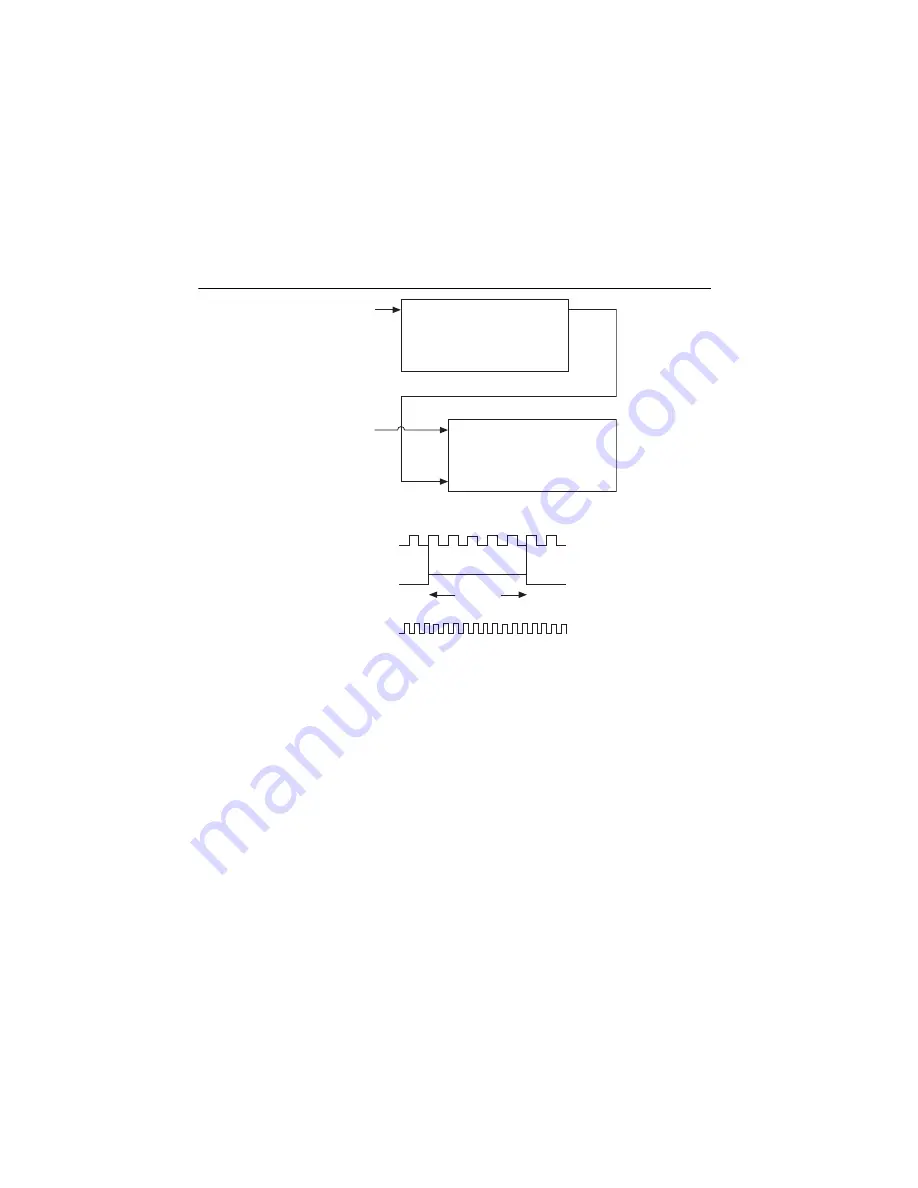
7-14
|
ni.com
Chapter 7
Counters
You can route the signal to measure to the Source input of Counter 0, as shown in Figure 7-14.
Assume this signal to measure has frequency
fx
. NI-DAQmx automatically configures
Counter 0 to generate a single pulse that is the width of
N
periods of the source input signal.
Figure 7-14.
Large Range of Frequencies with Two Counters
NI-DAQmx then routes the Counter 0 Internal Output signal to the gate of Counter 1. You can
then route a signal of known frequency (
fk
) as a counter timebase to the Counter 1 Source input.
NI-DAQmx configures Counter 1 to perform a single pulse-width measurement. Suppose the
result is that the pulse width is
J
periods of the
fk
clock.
From Counter 0, the length of the pulse is
N
/
fx
. From Counter 1, the length of the same pulse is
J
/
fk
. Therefore, the frequency of
fx
is given by
fx
=
fk
* (
N
/
J
).
Sample Clocked Buffered Frequency Measurement
Sample clocked buffered point frequency measurements can either be a single frequency
measurement or an average between sample clocks. Use CI.Freq.EnableAveraging to set the
behavior. For buffered frequency, the default is True. For hardware-timed single point
(HWTSP), the default is False.
S
o
u
rce
O
u
t
Co
u
nter 0
S
o
u
rce
G
a
te
O
u
t
Co
u
nter 1
S
ign
a
l to
Me
asu
re (
fx
)
S
ign
a
l of Known
Fre
qu
ency (
fk
)
CTR_0_
S
OURCE
(
S
ign
a
l to Me
asu
re)
CTR_0_OUT
(CTR_1_GATE)
CTR_1_
S
OURCE
Interv
a
l
to Me
asu
re
0
1
2
3
…
N
Summary of Contents for DAQ X NI 634 Series
Page 1: ...PXIe 6349...















































